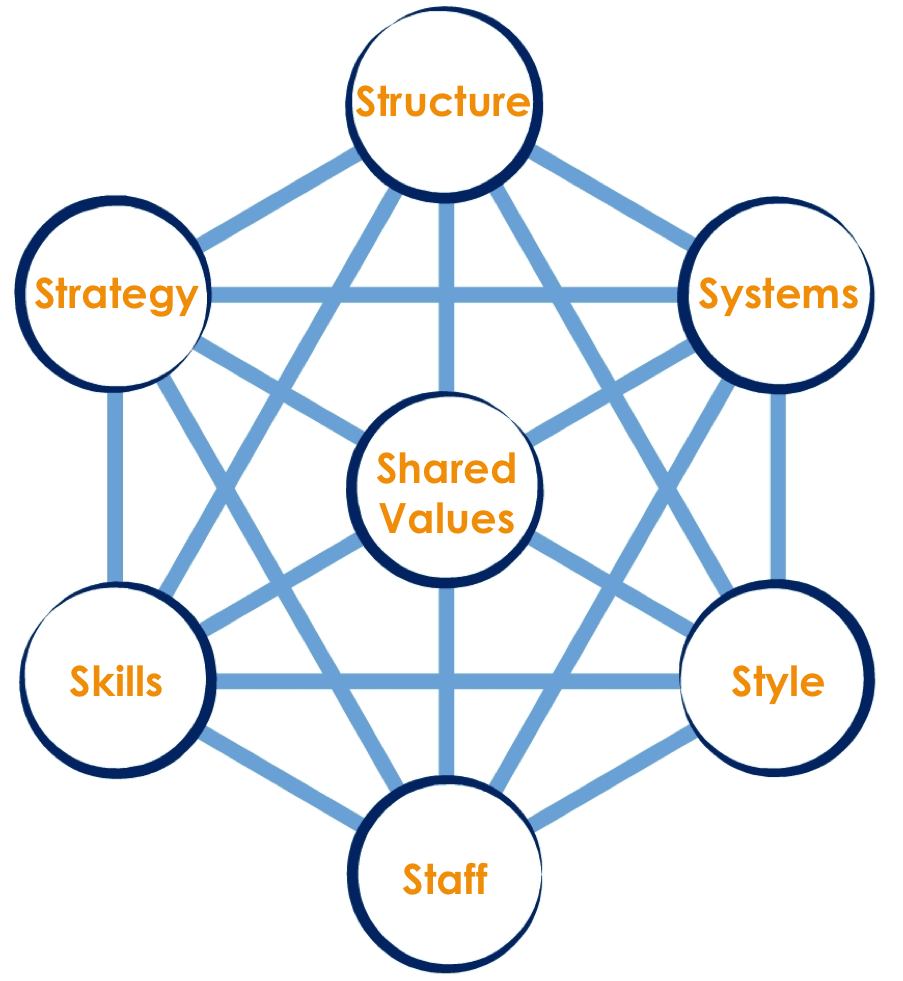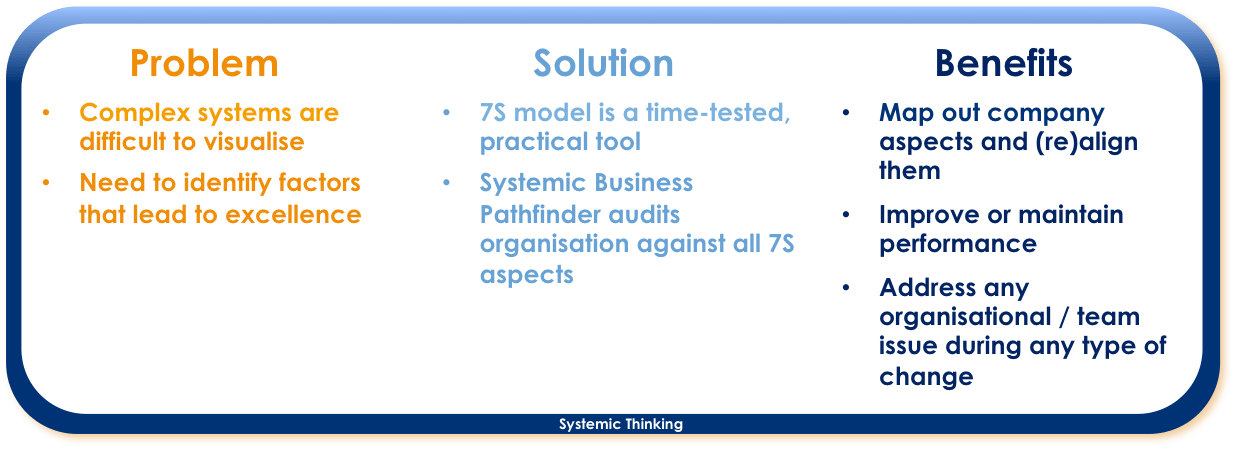Systemic Thinking
While some models of organisational effectiveness go in and out of fashion, one that has endured is the one developed by Tom Peters and Robert Waterman.
Two consultants, Peters and Waterman began their study at a time when American business was under great competitive pressure due to growing global competition, particularly from the Japanese.
They wanted to find out what made excellent American companies so very good, in order to provide valuable information for other companies. They began the project by examining 7 key variables, turned these into a matrix with shared values in the centre and the other principles around it. This became known as the ‘7-S Framework’, which translates into a series of terms beginning with the letter S:
 1. Strategy refers to the intended sequence of actions taken by a company to achieve its goals and objectives. It deals with alignment of resources and considers competition, customers and the environment. Ultimately it is about creating advantages and ‘wins’ in the market place.
1. Strategy refers to the intended sequence of actions taken by a company to achieve its goals and objectives. It deals with alignment of resources and considers competition, customers and the environment. Ultimately it is about creating advantages and ‘wins’ in the market place.
A thorough approach to executing the strategy should consider the other 6 S and their interdependencies.
2. Structure relates to how the various business units are structured and related to each other. For example, a company’s structure may be centralised (e.g. international, global), decentralised (e.g. multi-domestic) or have a network structure (e.g. transnational). This has implications on legal and accounting models.
3. Systems include the business and technical infrastructure employees use on a daily basis to accomplish their aims and goals. This refers to a host of hard- and software systems that define the processes and routines within an organisation.
4. Skills refer to employee competencies. The sum of the employees’ skill-sets equals a company’s ability. It is the ability to achieve an organisation’s strategic objectives, as reflected by its performance.
5. Style is mainly about a company’s communication, leadership and collaboration style. It very much has its roots in shared values, is often defined by norms (right vs. wrong), morals (good vs. bad) and manifests itself in management practices and behaviours. This would generally be seen as the company culture but that doesn’t start with ‘S’.
6. Staff, in simple terms, refers to the number and type of employees. It considers the recruitment, management, development and exiting of employees. Many outstanding companies have shown how essential it is for an organisation to manage its human capital in order to create a sustainable competitive advantage.
7. Shared values is all about an organisation’s values, beliefs and purpose. These are the fundamental ideas or guiding principles that lay the foundation of businesses.
Placing shared values in the middle of the model highlights that they are central to the development of all the other critical elements. After all, the company’s structure, strategy, systems, style, staff and skills all stem from the organisation’s philosophy and what it stands for. The original vision of the company was formed from the values of the founders. When values, beliefs and purpose change, so should and do all the other elements.
The 7S model is based on the theory that, for an organisation to perform well, these 7 elements need to be aligned and mutually reinforcing. So the model can be used to identify what needs to be realigned to improve performance, or to maintain alignment (and performance) during other types of change.
Whatever the change – restructuring, new processes, organisational merger, new systems, change of leadership, and so on, the model can be used to understand how organisational elements are interrelated. This highlights how changes made in one area have a wider impact on other areas within and without the business.
Using this model, Peters and Waterman focused on what “management excellence” is made of, starting with 75 companies and eventually narrowing them down to 43. It is therefore a systemic approach for creating corporate models of excellence.
We like the broad applicability of the 7S model that can address almost any organisational or team effectiveness issue. If something isn’t working within your organisation or team, chances are some of the S-elements are misaligned. Once these inconsistencies are revealed, you can work to align the internal elements so they all contribute to the shared goals and values.

